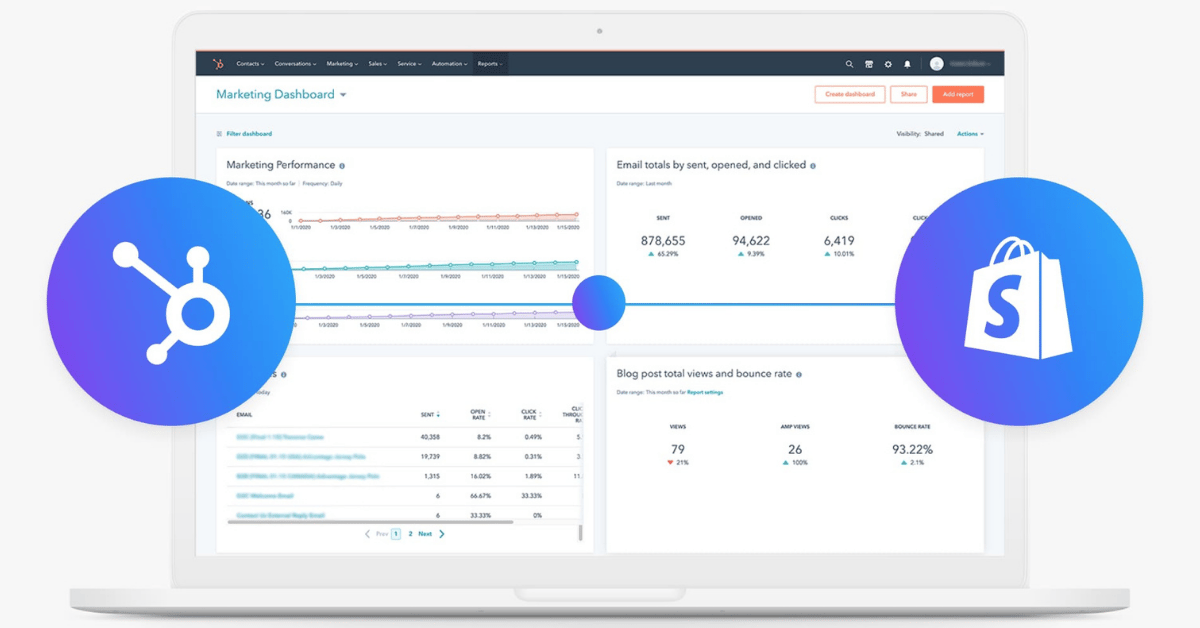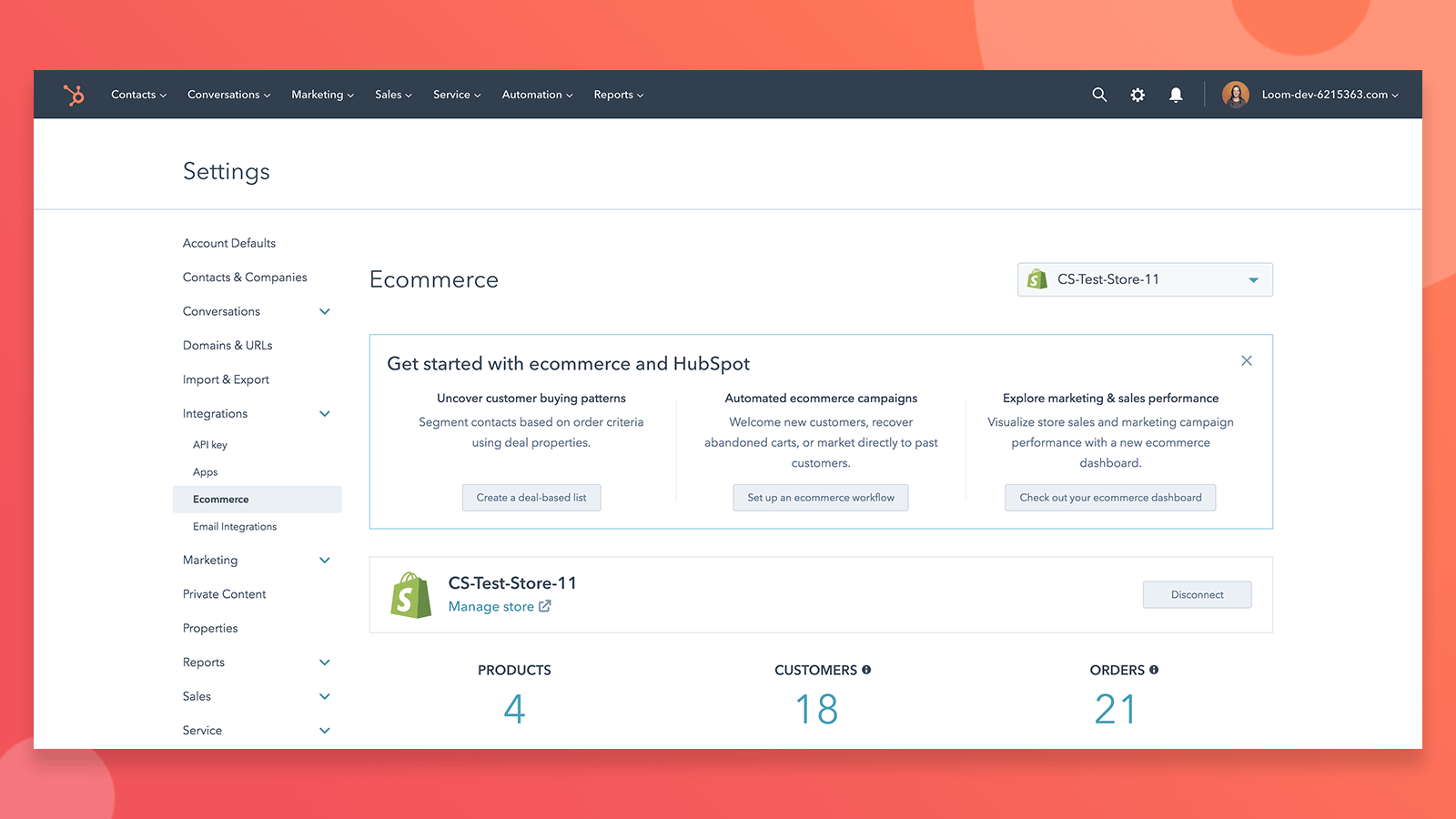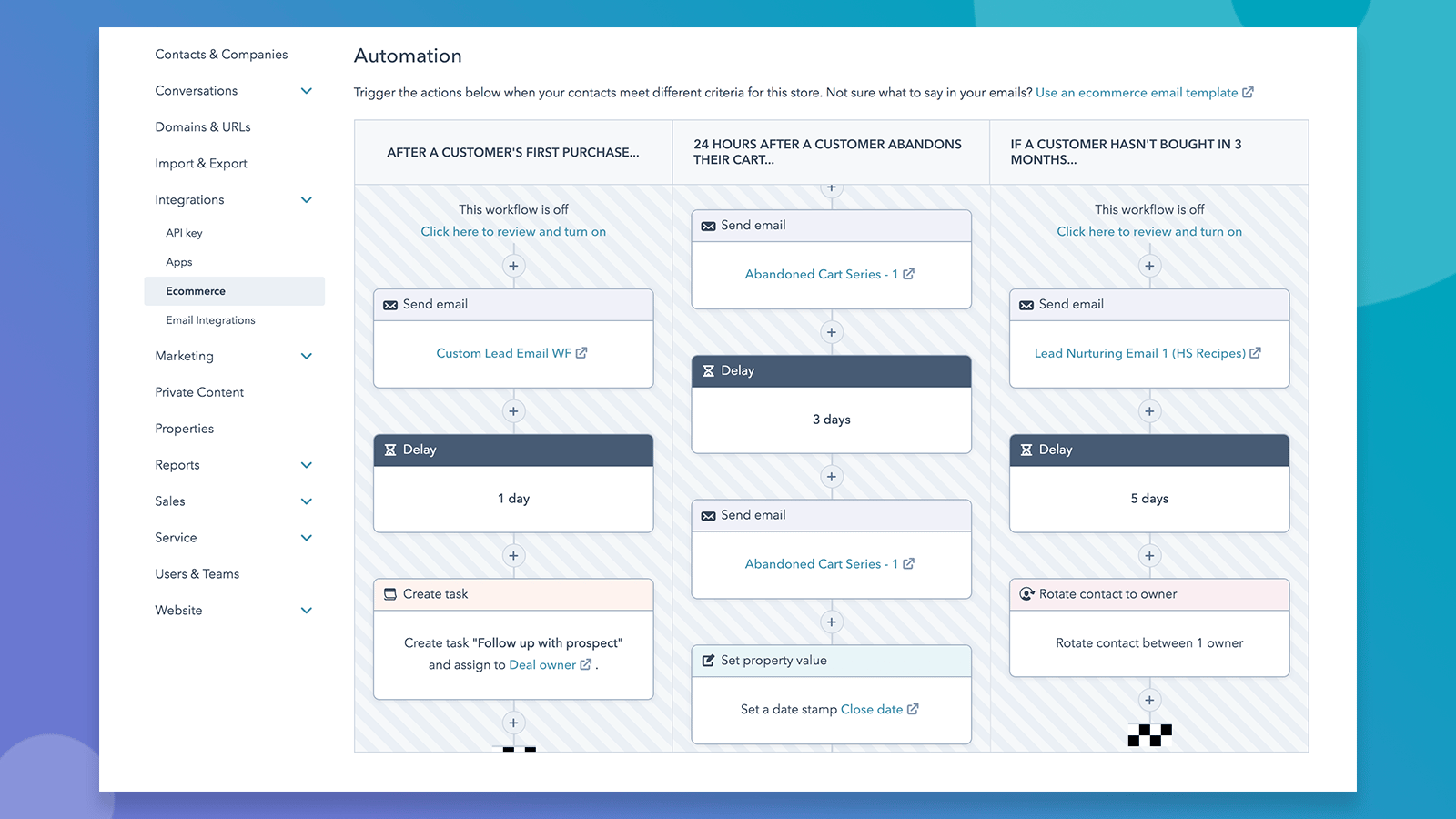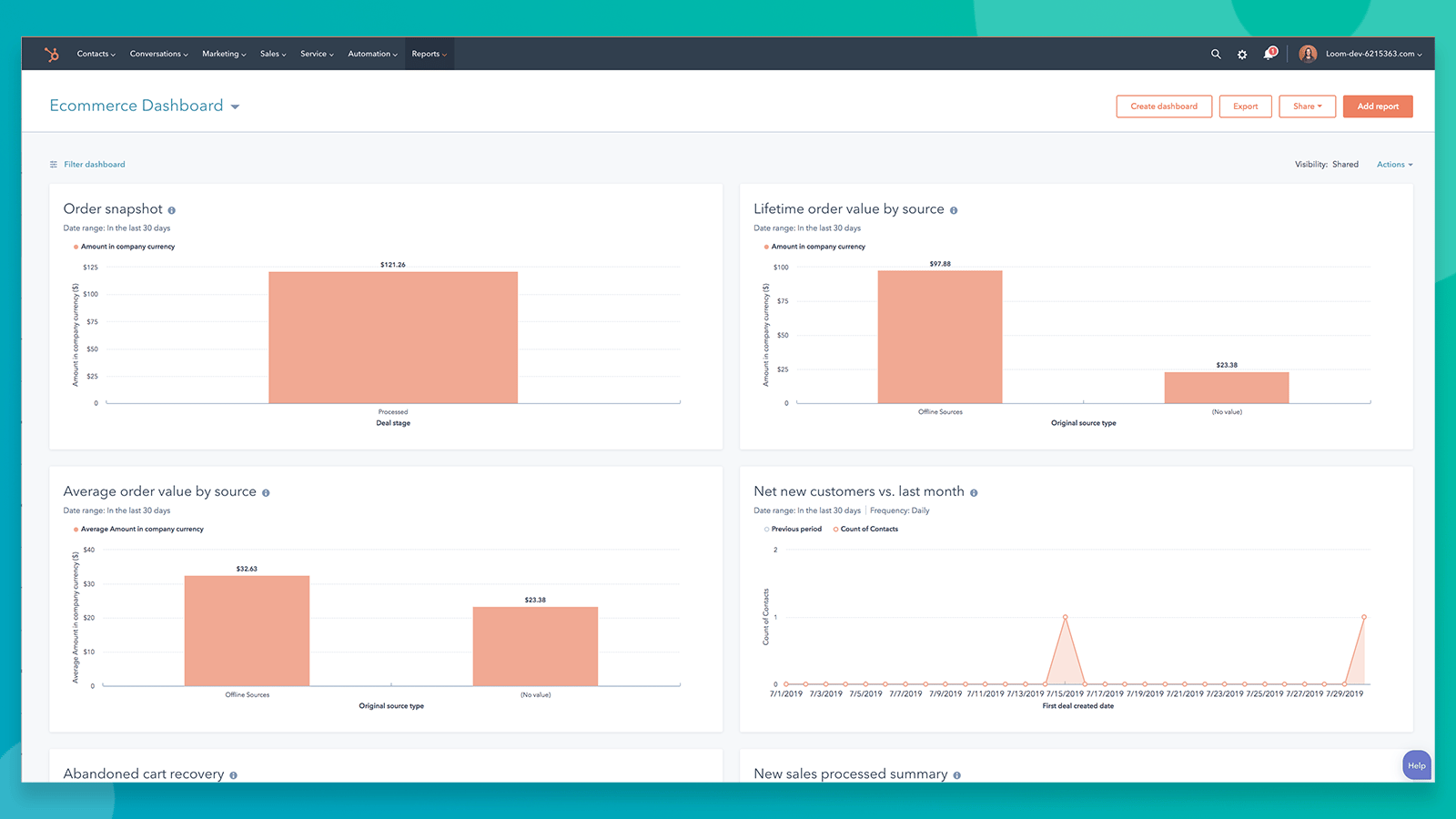HubSpot & Shopify Integration: Benefits, Features, & How To Get Started
HubSpot & Shopify Integration: Benefits, Features, & How To Get Started
Are you ready to take your e-commerce business to new heights by improving your marketing, sales, and customer relationships? The HubSpot Shopify integration has you covered. This powerful synergy between HubSpot, a leading CRM and marketing platform, and Shopify, a renowned e-commerce solution, offers a wealth of opportunities to enhance your online store's performance. In this article, we'll explore the ins and outs of the HubSpot Shopify integration, diving into its core functionalities, benefits, and providing step-by-step guidance on getting started. Let's embark on this journey towards more efficient and effective e-commerce management!
Understanding the HubSpot Shopify Integration

E-commerce has never been more competitive, and to succeed in this landscape, you need a powerful combination of tools. HubSpot and Shopify together offer a seamless solution to streamline your marketing, sales, and customer support processes, all from a centralized hub. This integration unifies your e-commerce operations, simplifying workflows, and providing a more personalized customer experience.
One of the core features of this integration is the unified customer data. With HubSpot, you can gather valuable information about your e-commerce customers, including their purchase history, browsing behavior, and interactions with your marketing campaigns. This enables you to create a comprehensive customer profile, allowing for personalized marketing efforts and customer support.
HubSpot's marketing automation capabilities can be supercharged with e-commerce data from Shopify. You can segment your customers based on their purchase history, preferences, and behaviors. Tailored email campaigns, product recommendations, and content can be delivered to the right customers at the right time, increasing the likelihood of conversions.
Cart abandonment is a common challenge in e-commerce. With this integration, you can set up automated cart recovery emails to re-engage potential customers and encourage them to complete their purchase. This feature alone can significantly boost your sales.
Your sales teams can benefit from the streamlined sales and inventory management. With the HubSpot Shopify integration, you have a real-time view of inventory levels, order statuses, and customer information. This data can help your sales teams provide accurate information and enhance customer interactions.
The integration enhances customer support and engagement. Your support teams can access all customer data, order history, and past interactions with your business. This enables them to provide faster and more personalized support, leading to improved customer satisfaction.
Unleashing the Benefits of the HubSpot Shopify Integration

The HubSpot Shopify integration offers a wide array of benefits for your e-commerce business:
Personalized Customer Experience: With a unified view of your customers, you can create highly personalized marketing campaigns and customer support interactions.
Improved Sales Efficiency: Streamlined sales and inventory management ensures that your sales teams have access to the most up-to-date information, reducing order errors.
Increased Conversions: Automated abandoned cart recovery and targeted marketing campaigns can lead to higher conversion rates.
Enhanced Customer Support: Faster and more personalized support can lead to increased customer satisfaction and loyalty.
Key Features of the HubSpot Shopify Integration

The integration boasts several key features designed to enhance your e-commerce operations:
Unified Customer Data: HubSpot brings together data from your e-commerce site and marketing efforts to create a comprehensive customer profile.
Segmentation: You can segment your customers based on various criteria, allowing for personalized marketing campaigns.
Abandoned Cart Recovery: Automated cart recovery emails can help you recover potential lost sales.
Real-time Sales and Inventory Data: Your sales teams have access to real-time data on sales and inventory.
Customer Support Enhancements: Support teams can provide faster and more personalized support with access to comprehensive customer data.
Getting Started with the HubSpot Shopify Integration

Now, let's dive into the steps to get started with the HubSpot Shopify integration:
Installation: Access the HubSpot App Marketplace and search for "Shopify." Install the integration to unlock its powerful features.
Account Setup: Create or log in to your Shopify account. Configure your settings to align with your e-commerce goals and objectives.
Integration Configuration: Connect your HubSpot and Shopify accounts, ensuring that e-commerce data flows seamlessly between the two platforms.
Data Synchronization: Start gathering e-commerce data and automating marketing efforts while ensuring that your customer data is always up to date.
Workflow Automation: Leverage the power of workflow automation to streamline your e-commerce management processes.
Conclusion
The HubSpot Shopify integration is the key to growing your e-commerce business. By unifying customer data, streamlining marketing efforts, and enhancing customer support, you can create a more personalized and efficient online shopping experience. Embrace this integration today and take your e-commerce operations to the next level of success. It's time to maximize the power of integrated e-commerce management for your business!



